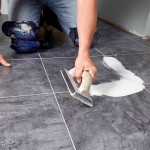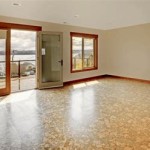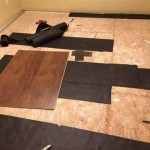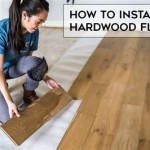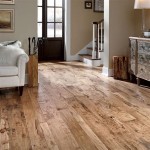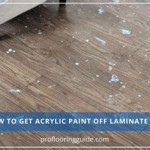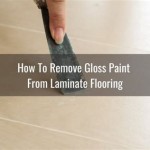Is Polypropylene Safe For LVP Flooring Installations?
Luxury Vinyl Plank (LVP) flooring has become a popular choice for homeowners and businesses due to its durability, aesthetic appeal, and ease of installation. Within the realm of LVP flooring, the composition of its various layers is critical to its overall performance and safety. One material that often surfaces in discussions about LVP composition is polypropylene. Understanding the role and safety profile of polypropylene in LVP installations is essential for making informed decisions about flooring choices.
Polypropylene is a thermoplastic polymer used in a diverse array of applications, ranging from packaging and textiles to automotive parts and construction materials. Its versatility stems from its favorable properties, including high chemical resistance, low moisture absorption, and good tensile strength. In the context of LVP flooring, polypropylene can be found in various components, often as part of the core layer or the backing material. Its presence raises questions about its potential impact on indoor air quality and overall safety for occupants.
The safety of any material used in building construction, including flooring, is paramount. Concerns often revolve around the release of volatile organic compounds (VOCs), which can negatively affect respiratory health and contribute to indoor air pollution. Therefore, a thorough examination of the properties of polypropylene and its behavior within the LVP flooring context is necessary to determine its safety concerning LVP installations.
Understanding Polypropylene's Role in LVP Flooring
Polypropylene's role in LVP flooring is primarily structural and functional. Its specific application depends on the manufacturer's design and the intended use of the flooring product. It is commonly utilized in the core layer, providing rigidity and stability to the plank. This is particularly important in thicker LVP products designed to withstand heavy foot traffic or resist indentation from furniture. The material's inherent strength contributes to the flooring's overall durability and longevity.
Furthermore, polypropylene can be used in the backing of LVP, serving as a moisture barrier and providing cushioning. Its low moisture absorption characteristic makes it an effective component in preventing water damage, which is a common concern in flooring installations, especially in areas prone to spills or high humidity. It can also improve the sound insulation properties of the flooring, minimizing noise transmission between floors.
The integration of polypropylene in LVP contributes to the product’s dimensional stability, helping to prevent warping or buckling under varying temperature and humidity conditions. This is a significant advantage over other flooring materials that may be more susceptible to environmental changes. The material’s chemical inertness also ensures it does not react negatively with cleaning agents or other substances commonly found in residential or commercial settings.
Evaluating VOC Emissions and Indoor Air Quality
A primary concern regarding the safety of polypropylene in LVP flooring is the potential emission of VOCs. VOCs are organic chemicals that vaporize at room temperature and can contribute to indoor air pollution and adverse health effects. These effects can range from mild irritation of the eyes, nose, and throat to more severe respiratory problems and even long-term health issues.
Polypropylene itself, in its pure form, is considered to have very low VOC emissions. However, the manufacturing process and any additives used in the production of polypropylene-based LVP components can influence the overall VOC emission profile of the flooring product. Additives like plasticizers, colorants, and stabilizers may contain VOCs that are released over time.
To address these concerns, various standards and certifications have been developed to ensure that LVP flooring products meet stringent VOC emission limits. One prominent example is the FloorScore certification, which tests and certifies flooring materials for compliance with strict VOC emission criteria. Products bearing the FloorScore label indicate that they have been independently tested and found to meet the requirements for low VOC emissions, contributing to healthier indoor air quality.
When selecting LVP flooring with polypropylene components, it is advisable to look for products that have been certified by reputable third-party organizations. This certification serves as assurance that the flooring has been rigorously tested and meets established safety standards for VOC emissions. Furthermore, specifying low-VOC adhesives and underlayments during installation can further minimize the potential for indoor air pollution.
Assessing the Environmental Impact and Sustainability
Beyond the immediate safety concerns related to VOC emissions, the environmental impact and sustainability of polypropylene in LVP flooring are also important considerations. The production of polypropylene, like other polymers, involves the consumption of fossil fuels and can contribute to greenhouse gas emissions. Therefore, the sourcing and manufacturing processes play a vital role in determining the overall environmental footprint of polypropylene-based LVP products.
Increasingly, manufacturers are focusing on developing more sustainable production methods for polypropylene. This includes utilizing recycled polypropylene in the production process, which reduces the demand for virgin materials and diverts plastic waste from landfills. Recycled polypropylene can be incorporated into the core or backing layers of LVP, providing a more environmentally friendly alternative to virgin polypropylene.
Furthermore, manufacturers are exploring bio-based polypropylene, which is derived from renewable resources rather than fossil fuels. Bio-based polypropylene offers the potential to significantly reduce the carbon footprint of LVP flooring. While still in its early stages of development, bio-based polymers represent a promising avenue for creating more sustainable flooring products.
The durability and longevity of LVP flooring also contribute to its overall sustainability. By choosing a durable LVP product with a long lifespan, homeowners can reduce the frequency of replacement, thereby minimizing waste generation. Proper maintenance and care can further extend the lifespan of LVP flooring, maximizing its environmental benefits.
Additionally, the end-of-life management of LVP flooring is an important aspect of sustainability. While LVP is not always easily recyclable due to its composite structure, some manufacturers are developing innovative recycling programs to recover and reuse materials from end-of-life flooring products. Supporting these initiatives can help promote a more circular economy for LVP flooring and reduce its environmental impact.
When evaluating the sustainability of polypropylene in LVP flooring, it is essential to consider the entire life cycle of the product, from raw material extraction to manufacturing, use, and end-of-life management. Choosing LVP products made with recycled or bio-based polypropylene, manufactured using sustainable practices, and designed for durability can help minimize the environmental footprint of flooring installations.
In summary, the safety of polypropylene in LVP flooring installations depends on several factors, including the purity of the material, the presence of additives, the manufacturing process, and the adherence to industry standards for VOC emissions. While pure polypropylene is considered to have low VOC emissions, it is crucial to select LVP products that have been certified by reputable third-party organizations to ensure they meet stringent safety standards.
Furthermore, considering the environmental impact and sustainability of polypropylene is essential for making responsible flooring choices. Opting for LVP products made with recycled or bio-based polypropylene, manufactured using sustainable practices, and designed for durability can help minimize the environmental footprint of flooring installations and promote a more sustainable future.
By carefully evaluating the safety and sustainability aspects of polypropylene in LVP flooring, homeowners and businesses can make informed decisions that prioritize indoor air quality, environmental responsibility, and the long-term well-being of building occupants.

Is Polypropylene Safe For Vinyl Plank Flooring Chemistry Everyone

Is Polypropylene Safe For Vinyl Floors Chemistry Everyone

Is Polyisocyanurate Safe With Vinyl Floor Plank

Polypropylene Plastic Flooring At Com

Non Toxic Vinyl Plank Flooring Brands The Risks My Chemical Free House

Plastic Deck Polypropylene Flooring Waterproof And Antiskid Herringbone Engineered Wood Installing Vinyl Plank Floor Colorful Made In Com

Lvp Wear Layer Thickness Chart What Is A Good For Vinyl Flooring
Non Toxic Vinyl Plank Flooring Brands The Risks My Chemical Free House

Workpro Premium Laminate Wood Flooring Installation Kit
Non Toxic Flooring Underlayment My Chemical Free House
See Also
